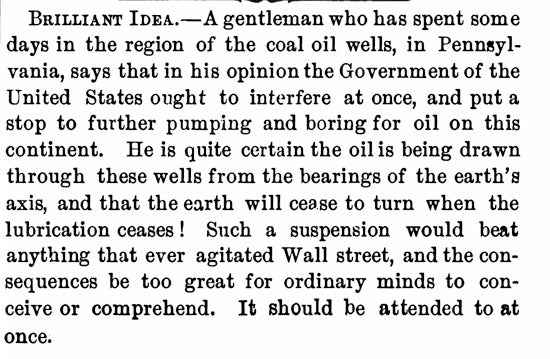This article was published in Scientific American’s former blog network and reflects the views of the author, not necessarily those of Scientific American
By now, we are all familiar with the many reasons we need to lessen our dependency on oil and of the importance in looking for alternative and renewable energy sources.
If you need any more convincing, however, maybe you'll go along with an idea printed in the October 11, 1862, Scientific American.

On supporting science journalism
If you're enjoying this article, consider supporting our award-winning journalism by subscribing. By purchasing a subscription you are helping to ensure the future of impactful stories about the discoveries and ideas shaping our world today.
Just three years before this article was published, one of the first successful oil wells had been drilled under the direction of Edwin Drake near Titusville, Pa., an area where oil seeps had been known to exist for many years.
Almost 150 years later, decisions of whether or not to drill on American soil are still being argued. Whereas the reasons may have changed (we no longer need to worry that using up our oil supply will cause the world to literally stop turning--although maybe figuratively), the need to find alternative energy sources is as clear as ever. I love that the unnamed gentleman is quite certain about his hypothesis, and that the article calls attention to the fact that the exhaustion of the oil supply would not be fixed by any amount of money.